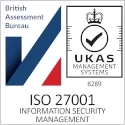15
+
YEARS OF
EXPERIENCE
1000
+
SUCCESSFUL
Projects
80
+
Satisfied
Clients

Both Converged Infrastructure (CI) and Hyperconverged Infrastructure (HCI), combine workloads, streamline processes, and improve your UK business’ productivity and efficiency. They converge the increased storage and processes associated with virtualized workloads for better compatibility, simplified deployments, and lower costs.
CI is a hardware-based approach to data centre management. Using building blocks, it improves compatibility between storage systems, servers, and network devices and combines storage and compute into a small but mighty single physical appliance. This is not only simpler to manage, but is significantly cheaper, both during deployment and maintenance: by reducing the number of physical components, CI reduces the associated costs of these, such as floor space, cabling, and energy. What’s more, CI is more agile, scalable, and efficient than non-converged architecture.
Meanwhile, HCI is a software-based approach where deployment is based on commodity components. Instead of the discrete building blocks we see in CI, HCI is software-defined with indivisible integrated technology. As the name suggests, HCI is the next generation of converged infrastructure, offering better value, productivity, scalability, and efficiency. With the management centralized and handled in apps and virtual machines, HCI can centrally manage all virtual environments globally with just a single interface.
Do I need converged infrastructure?
You might, if you’re involved in any of the following activities:
- Virtualizing applications or deploying new tier-one applications
- Managing remote disaster recovery sites or infrastructure
- Consolidating data centres
- Implementing Virtual Desktop Infrastructure (VDI)
- Testing or developing infrastructure
- Data migration
If you’re considering CI or HCI for your London company infrastructure, or struggling to choose between the two, get in touch with the team at Proxar IT Consulting today to see how we can help your business.








Choosing a reliable Data Centre Solutions Provider
When it comes to selecting a dependable Data Centre Solutions Provider, there are several key factors to consider to ensure that your data management needs are met efficiently and effectively. One crucial aspect to look for is the provider’s track record of reliability and security. Make sure to inquire about their data backup measures, disaster recovery plans, and adherence to industry standards.
Additionally, consider the scalability and flexibility of the solutions offered by the provider. Your business needs may evolve over time, so it is essential to choose a provider that can accommodate your growth and changing requirements without major disruptions.
Another important consideration is the level of customer support provided by the Data Centre Solutions Provider. Having access to a knowledgeable and responsive support team can make a significant difference in resolving issues promptly and minimizing downtime.
Lastly, don’t forget to assess the cost-effectiveness of the solutions offered. While it’s important to stay within budget, remember that the cheapest option may not always be the most reliable or secure. Seek a balance between cost and quality to ensure that you are getting the best value for your investment.
By carefully evaluating these factors and choosing a Data Centre Solutions Provider that aligns with your business needs, you can establish a strong foundation for your data management strategy and drive success in the digital age.


answer time
satisfaction
score
on initial call
same business
day










